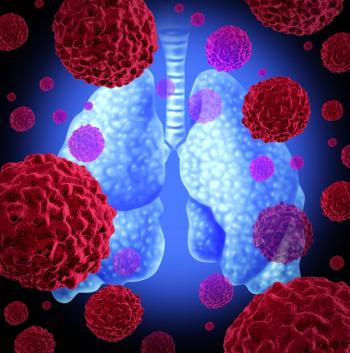
Study Shows Increased Use of Immune Checkpoint Inhibitors in Patients with Advanced NSCLC
In this retrospective cohort study, the use of immune checkpoint inhibitors among patients with advanced NSCLC with negative, low, or untested PD-L1 expression was found to have increased over time.
In a study published in JAMA Network Open, the use of immune checkpoint inhibitors (ICIs) among patients with advanced non-small cell lung cancer (NSCLC) with negative, low, or untested PD-L1 expression increased over time, corresponding with the new evidence supporting the efficacy of these agents across all levels of PD-L1 expression.1
According to researchers, these findings suggest that national practice was rapidly responsive to this new clinical evidence and did not adhere to regulatory guidance in place at the time.
“During the period when regulatory guidance initially recommended that first-line ICI treatment be limited to patients with advanced NSCLC whose tumors express PD-L1, a substantial proportion of patients with negative, low, or untested PD-L1 expression status received first-line ICI treatment,” the authors wrote. “These findings suggest that real-world practice was highly responsive to new clinical evidence and in a manner that preceded formal changes to regulatory guidance.”
In this retrospective cohort study, investigators used a deidentified nationwide electronic health record-derived database which reflected real-world care at approximately 800 US sites of care. Patients included in the study had advanced NSCLC without other identifiable variations diagnosed after the FDA’s initial first-line approval of ICIs for patients with high PD-L1 expression (≥50%).
In total, 45,631 patients (mean [SD] age, 68.4 [9.6] years; 21,614 [47.4%] female) with advanced NSCLC were included in the study. From 2015 to 2018, PD-L1 testing was found to have increased from 468 (7.2%) to 4202 (73.2%).
Within a subset of 7785 patients receiving first-line treatment in the period after first-line approval of pembrolizumab, individuals who received PD-L1 testing had greater odds of receiving an ICI (odds ratio, 2.11; 95% CI, 1.89-2.36). Of the patients with high PD-L1 expression (≥50%), 1541 (83.5%) received first-line ICI treatment. Moreover, 776 patients (40.3%) with low PD-L1 expression (1%-49%) and 348 (32.3%) with negative PD-L1 expression (0%) also received ICIs.
Even further, 755 untested patients (32.8%) were treated with a first-line ICI. Notably, the proportion of patients who received ICIs without PD-L1 testing increased throughout the study period (59 [17%] in quarter 4 of 2016 to 141 [53.8%] in quarter 4 of 2018).
“Taken together, these findings highlight the practical complexities associated with implementing a biomarker-based treatment strategy for new cancer drugs,” the authors wrote. “These complexities may be particularly acute when test results are not clearly binary, and the science is rapidly changing because of the addition of new information that may affect interpretation of test results.”
The researchers indicated that further investigation seems to be warranted given the possibility for greater ICI treatment toxic effects in real-world settings compared with clinical trials.
In an editorial written by Hossein Borghaei, DO, MS and Martin J. Edelman, MD, both of the Fox Chase Cancer Center, the question was posed that, now that ICIs have demonstrated efficacy and superiority in settings both alone and in combination with chemotherapy, what is the role and timing of chemotherapy with immunotherapy?2 They suggested that this will be answered in the already accruing INSIGNA trial.
“Successful completion of trials such as INSIGNA either could lead to a confirmation of current guidelines or could establish a new treatment strategy among patients with NSCLC,” the editorial authors wrote. “It is imperative that we base clinical decision-making on evidence. We can limit the potential toxic effects (including financial) of these drugs in patients who will not benefit from treatment and ultimately serve our patients better.”
References:
1. Leapman MS, Presley CJ, Zhu W, et al. Association of Programmed Cell Death Ligand 1 Expression Status With Receipt of Immune Checkpoint Inhibitors in Patients With Advanced Non-Small Cell Lung Cancer. JAMA Network Open. doi:10.1001/jamanetworkopen.2020.7205.
2. Borghaei H, Edelman MJ. Biomarker Testing in Lung Cancer – What Does It Mean? JAMA Network Open. doi:10.1001/jamanetworkopen.2020.7171
Newsletter
Stay up to date on recent advances in the multidisciplinary approach to cancer.
































































































